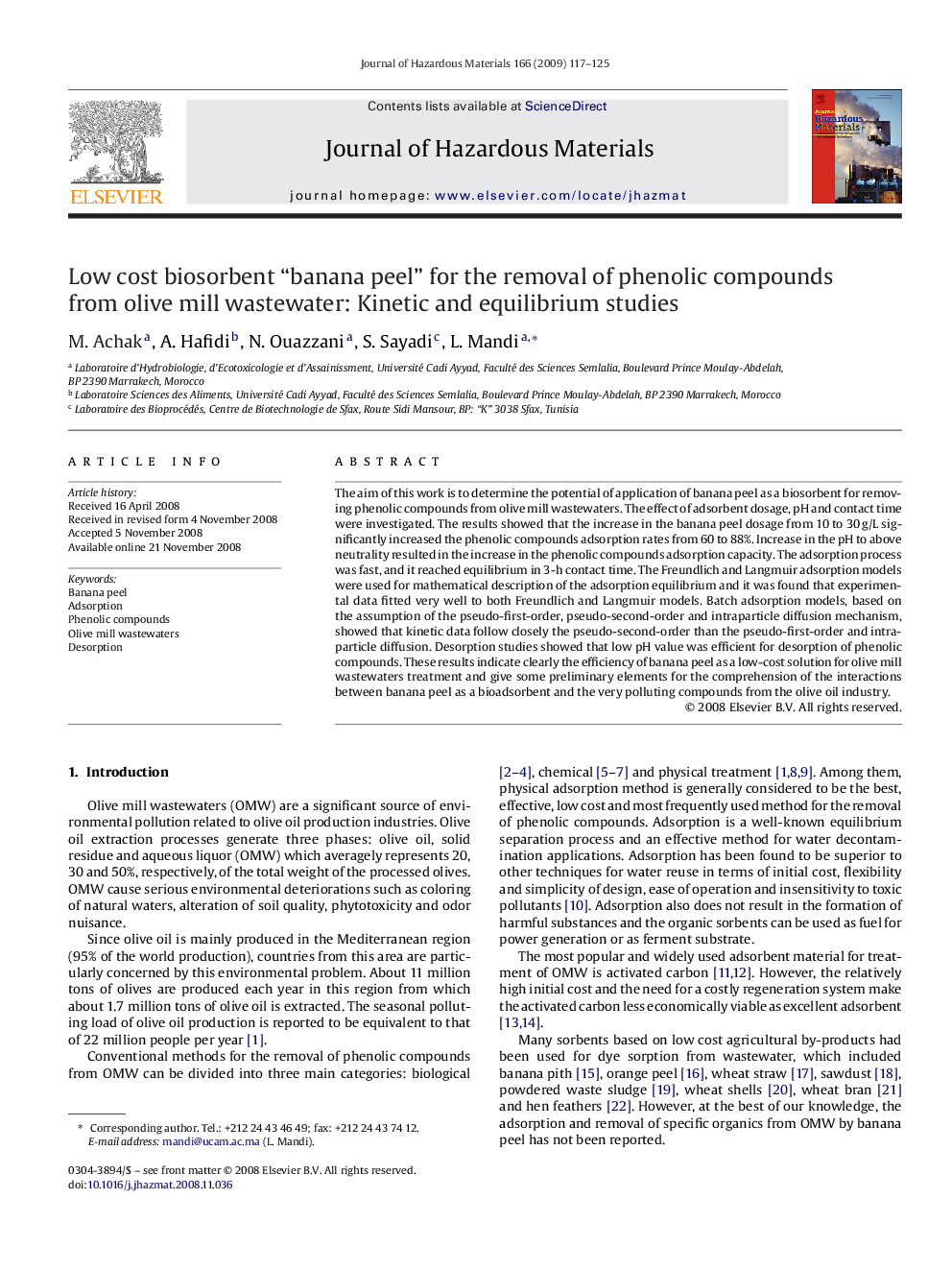| Article ID | Journal | Published Year | Pages | File Type |
|---|---|---|---|---|
| 581857 | Journal of Hazardous Materials | 2009 | 9 Pages |
Abstract
The aim of this work is to determine the potential of application of banana peel as a biosorbent for removing phenolic compounds from olive mill wastewaters. The effect of adsorbent dosage, pH and contact time were investigated. The results showed that the increase in the banana peel dosage from 10 to 30Â g/L significantly increased the phenolic compounds adsorption rates from 60 to 88%. Increase in the pH to above neutrality resulted in the increase in the phenolic compounds adsorption capacity. The adsorption process was fast, and it reached equilibrium in 3-h contact time. The Freundlich and Langmuir adsorption models were used for mathematical description of the adsorption equilibrium and it was found that experimental data fitted very well to both Freundlich and Langmuir models. Batch adsorption models, based on the assumption of the pseudo-first-order, pseudo-second-order and intraparticle diffusion mechanism, showed that kinetic data follow closely the pseudo-second-order than the pseudo-first-order and intraparticle diffusion. Desorption studies showed that low pH value was efficient for desorption of phenolic compounds. These results indicate clearly the efficiency of banana peel as a low-cost solution for olive mill wastewaters treatment and give some preliminary elements for the comprehension of the interactions between banana peel as a bioadsorbent and the very polluting compounds from the olive oil industry.
Related Topics
Physical Sciences and Engineering
Chemical Engineering
Chemical Health and Safety
Authors
M. Achak, A. Hafidi, N. Ouazzani, S. Sayadi, L. Mandi,
